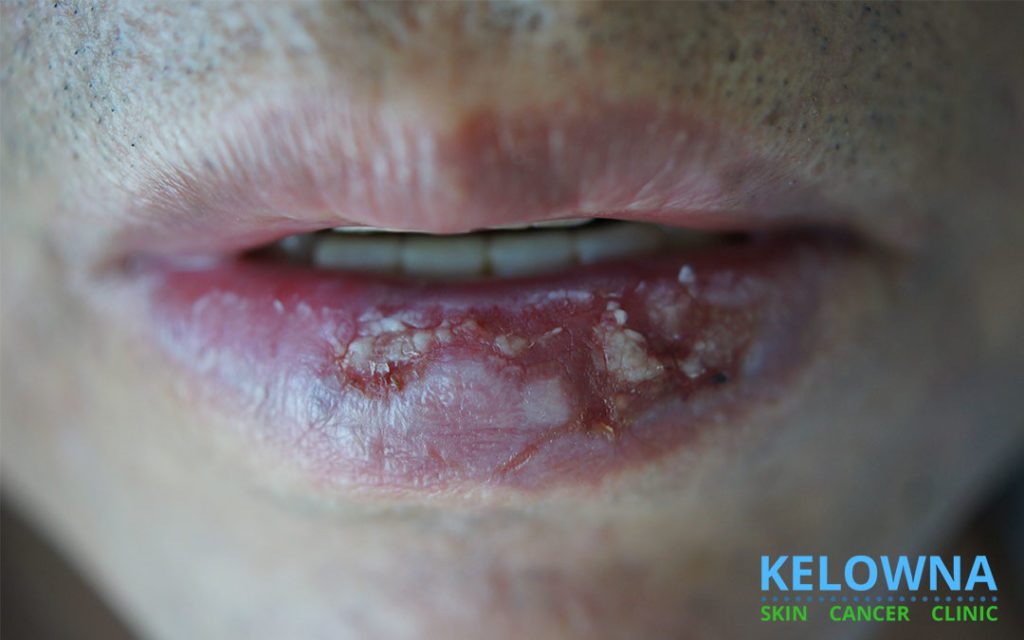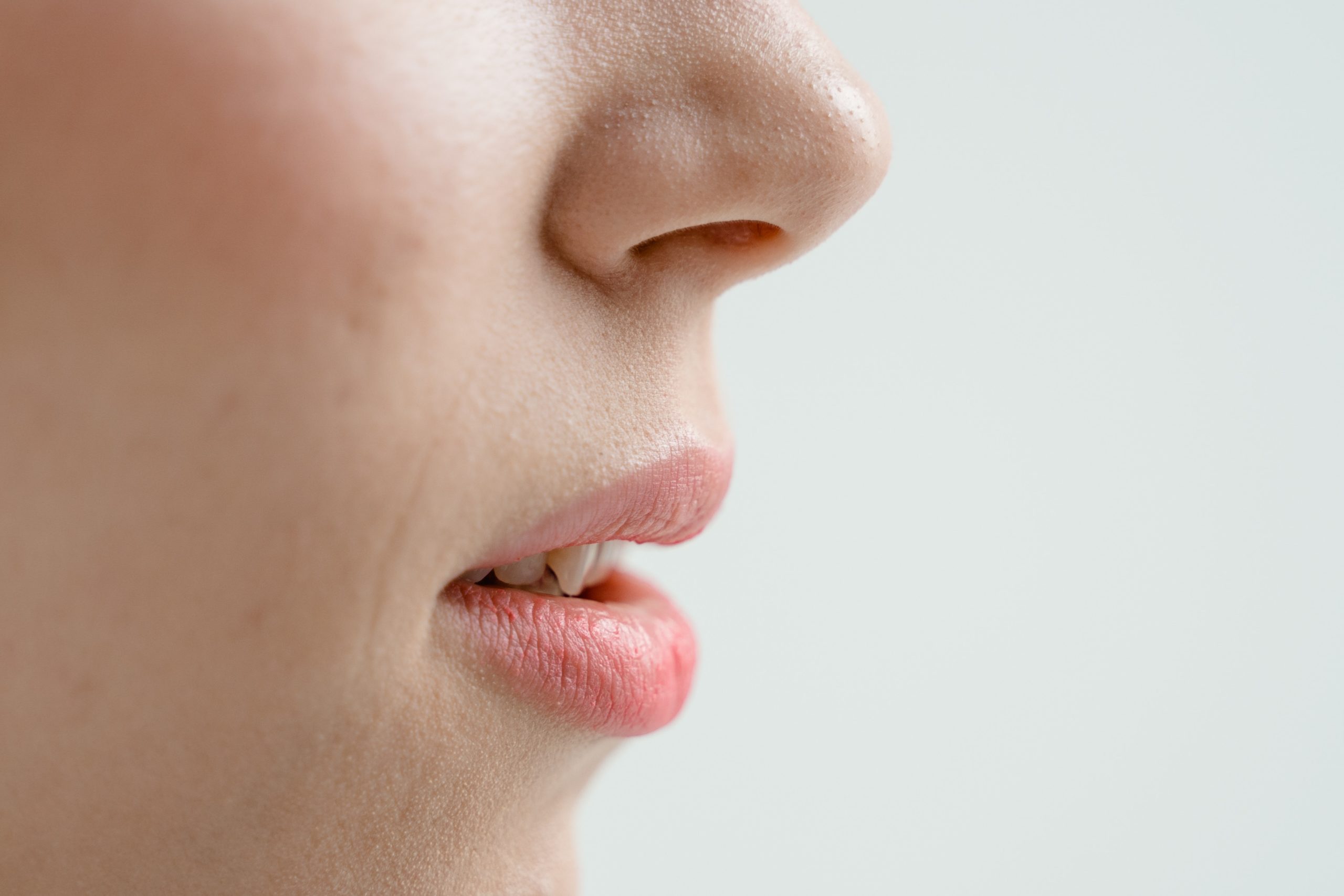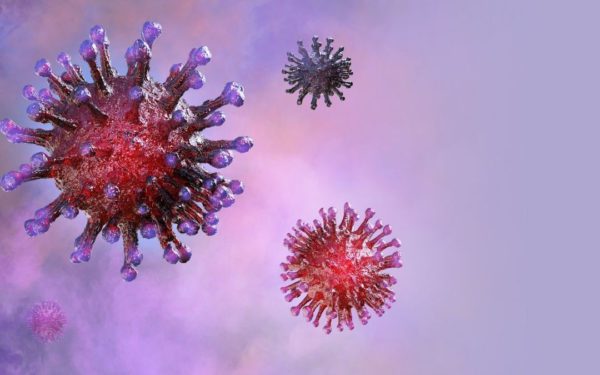We all have dry lips sometimes, and in most cases, it is no cause for concern. However, if these symptoms persist, you might be suffering from a pre-cancerous inflammatory condition called Actinic Cheilitis.
Actinic Cheilitis (AC) is caused by long-term exposure to the sun. It may look like chapped lips initially that may later become scaly or white. It is generally painless, but if left untreated, it may cause squamous cell carcinoma – a type of skin cancer.
Usually occurring in people above 40 years of age, Actinic Cheilitis is more common in males than females. Individuals who spend a lot of time in the sun are more prone to develop it. Therefore, if you spend time outside quite often, it is good to protect your lips with an SPF-containing lip balm.
Actinic Cheilitis
Symptoms of Actinic Cheilitis
The initial symptom of Actinic Cheilitis is dry, rough, and cracking lips. Later, a patch may develop that can be either swollen and red, or white. This mostly occurs on the lower lip. In advanced stages, the patch may turn scaly with a sandpaper-like texture. Also, the line between your skin and lower lip may fade. These scaly lip patches are mostly painless.
Causes & Risk Factors
Actinic Cheilitis is caused by long-term exposure to the sun. It may take many years of intense sun exposure to develop this condition. People engaged in some specific types of professions are more likely to develop AC, such as fishermen, landscapers, and outdoor athletes. Individuals with lighter skin tone are also more susceptible to get AC, particularly if they reside in regions with sunny climates. If your skin freckles or gets sunburns easily, or you have a history of skin cancer, then you are at a higher risk of developing AC. People above 40 years are more likely to develop it and it is more common in men than women. Albinism and a weakened immune system also increase your chances of developing this condition.
Diagnosis

Early-stage AC simply looks like chapped lips. If you see an area on your lip that persistently looks scaly, patchy or similar to a sunburn, you should see a physician. Sometimes the diagnosis can be made by simply looking at your lips and considering your medical history, but often a biopsy will be required to confirm the diagnosis.That involves removing a small piece of tissue from the affected region on your lip for laboratory analysis.
Treatment of AC
Since it cannot be accurately predicted which patches would eventually develop into skin cancer, all Actinic Cheilitis cases are treated with medication or surgery.
Medicines that are administered directly on the skin, like fluorouracil, works by killing the affected cells without harming the normal cells. Often prescribed for 2-3 weeks, these medications have side effects like swelling, a burning sensation, and pain.
Mild cases of Actinic Cheilitis can be treated with Retinol cream.
Surgical removal of an AC patch may be recommended by your physician. Cryotherapy is one such procedure in which the physician freezes the patch with liquid nitrogen. This causes the affected area on the lip to swell and peel off, which allows new healthy skin cells to develop. Cryotherapy is the most common surgical procedure for Actinic Cheilitis.
Electrosurgery is another surgical method to treat AC. An electric current is used to destroy Actinic Cheilitis tissues. A local anesthetic is applied prior to the procedure.
How You Can Prevent Actinic Cheilitis
Minimizing exposure to the sun is the best way to prevent AC.
- Wear a wide-brimmedhat to shade the face.
- Use a lip balm with SPF 15 or above. Reapply it often if you are out in the sun for long
- Avoid going out in the sun during midday hours, when sunrays are strongest.
Remember that AC can develop into skin cancer, therefore it’s important to see a physician if you notice any of the symptoms discussed above.
We often forget that our lips are part of our skin too, so if you want to keep them soft and kissable, slather on that sunscreen!
Survey from the Melanomanetwork.ca
Basal cell carcinoma (BCC) is a cancer of the epidermis, which is the outermost layer of the skin. BCC is the most common type of skin cancer, making up about 75% of all non-melanoma skin cancers diagnosed.
A drug review is imminent to assess whether provinces should fund ODOMZO® (sonidegib), a prescription medicine used to treat adults with a type of skin cancer, called basal cell carcinoma, that has come back following surgery or radiation or that cannot be treated with surgery or radiation.
Your input counts
Melanoma Network of Canada is providing a submission to aid in the process for determining provincial listing and coverage of this drug therapy. Your Input will help us prepare a group submission to the pan-Canadian Oncology Drug Review (pCODR) on the experiences and opinions of BCC patients and their caregivers. As many of you already know, effective treatment therapies for locally advanced or metastatic basal cell carcinoma are very limited and patients are in great need of options for treatment and quality of life. While the majority of BCC patients will be treated effectively with topical solutions, surgery or radiation, for the small number of patients where these treatments do not work, this new therapy holds significant promise for effective treatment and improved quality of life.




